I Heard It Through The Grape Vine
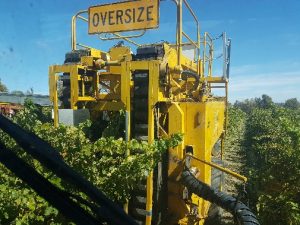 Wine making, to wine connoisseurs, has always been known as an art form. The wine making industry has evolved from humble foot stomping beginnings, and has developed into a technical, artistic and scientific process.
Wine making, to wine connoisseurs, has always been known as an art form. The wine making industry has evolved from humble foot stomping beginnings, and has developed into a technical, artistic and scientific process.
From the moments the fresh grapes are harvested to the sip you take after a long day, there are a lot of complex elements and variables that take place.
This begs the question, is wine making an art form or a science? Chelsea Mitchell pops the cork on the wonderful world of wine-making.
As the sun beats down you stare across the incredible landscape and the clear blue skyline. In front of you are vines pregnant with grapes entangled on wooden posts, stretching across the vast amount of land ahead. The notes, the tannins, the smell, the colour and the beautiful taste that tingles and tantalizes your tastebuds, begins at vines like these.
Suddenly you hear the roar of the harvester, and you turn to see a large yellow piece of machinery in the distance. Contracted harvester, Geoff Carter, says for wine-makers, the new harvesting technology has been a welcome advancement, as it means less man power is needed to pick the fruit and the grapes can be picked faster.
Geoff has many years of experience in the wine industry. He explains that more fragile varieties of grapes like Sauvignon Blanc are still picked by hand. This is because Sauvignon Blanc grapes tend to juice easier. But for other varieties of grapes, hand-picking is a costly alternative considering the number of hand pickers that would be needed to complete the task efficiently.
Ross, a volunteer assisting during the process, quips “the more moving parts, the more things that can go wrong” as the harvester drives by.
The whooshing and roaring machine envelops the long rows of greenery, as it spits out vagrant bits of stems and juice, during its journey along the vine.
The sunny beast pulls in the grapes and sends them out onto a long mechanical vessel, which is then caught in a large container that sits atop a forklift, driven by the winery owner.
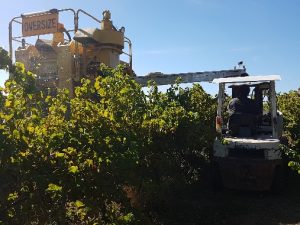 Robert Howell has been in the wine industry since he first started Jeir Creek Winery in 1984. Mr Howell has seen the industry develop into a new scientific field which he embraces and he puts into practice the clever science behind wine making. Mr Howell notes that a major game changer in the industry is the technological advancements. He says that the new technology means “there’s no guessing anymore”. Where you use to rely solely on human experience to decide upon harvesting, science can now be used in conjunction with tasting, to determine the chemical balances of the grapes.
Robert Howell has been in the wine industry since he first started Jeir Creek Winery in 1984. Mr Howell has seen the industry develop into a new scientific field which he embraces and he puts into practice the clever science behind wine making. Mr Howell notes that a major game changer in the industry is the technological advancements. He says that the new technology means “there’s no guessing anymore”. Where you use to rely solely on human experience to decide upon harvesting, science can now be used in conjunction with tasting, to determine the chemical balances of the grapes.
The scientific and artistic decisions begin before the grapes are even harvested. Mr Howell notes the different factors wine makers must consider about the grapes they are producing. These include; the climate in which they are growing the grapes, the time the grapes have been on the vine, the chemical balance of the grapes, the scent and the taste of the grapes before they are harvested.
Mr Howell says that today’s practices are “combining the new techniques and the old techniques”. Because, while chemical levels play an important role in the production of wine, he believes technology cannot replace an experienced palate. But interestingly, Mr Howell states that the industry has evolved from a solely artistic medium to an industry that is now able to “make more studied and realistic decisions”.
Mr Howell says that “In the laboratory we’re looking at the specifics of those chemical compounds” and how they will affect the wine. From these findings he is able to make adjustments, such as if there is a certain kind of acidity that will be too harsh on the palate, he can add a chemical to combat the acidity. In fact tertiary institutions now offer wine science degrees, in order to understand and change wine during production more effectively.
But human decisions are still made before bottling the fruit of the vine. Different artistic decisions are made before the grapes are even harvested. These choices are based on scientific research and the human palate. Mr Howell assesses the wine by smell and colour and makes necessary adjustments to produce the best end product. While he knows science is a crucial part of the process, Mr Howell also believes you still can’t replace an experienced wine makers nose and palate.
Once the grapes are harvested, the production process begins. The grapes must then be pressed and typically, for white wines they are then crushed, whereas red wines are fermented in their skins first.
The grapes pour into the machine and fall gently into a shape resembling Tasmania. The colour of the grapes is an extraordinary green like a moss sitting gently on a rock. The grapes race down the arm of the crusher, like cars riding along a busy highway. But the crusher must be turned off and on in bursts, to allow the pressing machine to catch up to the crusher’s leaps and bounds.
As the stray juice from the grapes fly’s through the air, a rush of air hits you, and with it you smell the beautiful fresh grapes and the industrial machinery pumping them through to the next step of the process. Once the grapes are crushed and the stems have been separated, they are then moved to the pressing process. However, for red wines they are kept in their skins and fermented longer to increase the amount of skin-to-juice contact. The skin contact, which is the contact between the grape centre and the skin, helps develop the colour and tannins of a wine.
During the pressing process the grape centre and the grape skins are separated. The juice flows through a long hose into a barrel, where the wine goes through to the next step of its journey.
After the grapes are pressed and crushed, the next step is fermentation.
The Wine Companion (2017) describe formation as “the process of converting grape sugar to ethanol (ethyl alcohol) and CO2 through the action of yeast.” The process takes the sugar from the grapes and turns it into alcohol.
White wines are typically separated from the skins straight after harvesting and put into fermentation, because they become acidic without too much skin contact. Whereas grapes used for red wine are typically kept with the skins longer to help develop the tannins and the colour. The tannins lie within the skin of the grapes, and while skin contact does help develop the flavours of a red wine, prolonged skin contact can cause a drying effect. So if you notice you’re experiencing a strong drying sensation when drinking red wine than it could mean that it was left in contact with the skins for too long.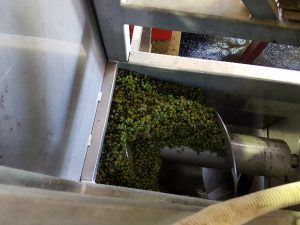
Mr Howell says the decisions made during the production process have a significant impact on the finished product. Another important factor mentioned by Mr Howell that impacts the outcome of a wine, is the time it is kept in oak barrel. On their website the US Forest service say that “Wine, as it rests in the barrel, goes through subtle chemical changes, resulting in greater complexity and a softening of the harsh tannins and flavours present at the end of fermentation.” The length of time that the wine sits in oak and the type of oak that it rests in, are both important artistic decisions that can produce different qualities in the wine.
One example of this is his Jeir Creek 2010 Merlot which produced two different wines from the same harvested fruit. While he followed the typical process for the original merlot, for the Reserve Merlot he also cold soaked the wine before fermenting it. In addition he put the wine in a French oak barrel for a year after it soaked in the traditional oak barrel for a year as well. He said the result produced completely different wines, despite being made from the same harvested grapes.
Before the rich nectar is bottled, wine-makers must decide whether to use screw cap or cork stopping tops. Mr Howell muses that screw cap was once “associated with cheap commercial wines”, but now it has become the preferred option of many wine makers. This is because of “cork taint” which can affect the overall taste of a wine.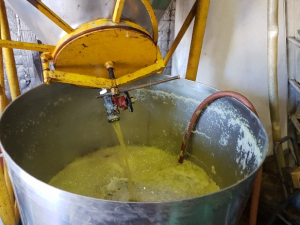
Wine Tasting
The final part of the process is enjoying a nice glass of wine, because the artistic qualities of wine don’t just appear during the production process, but also can be seen in its consumption. Drinking a glass of wine is a sensory experience, because you appreciate the wine through visuals, taste and smell. Wine has come to be appreciated by the consumer as an art form.
Ronald. S. Jackson’s writes in Wine Tasting: A Professional Handbook (2009), that when assessing a wine you’re looking at “appearance”, “odour in glass”, “in mouth sensations”, “finish” and then a “repetition of assessment”. Drinking a glass of wine is an experience that captures multiple senses, so it’s important to notice the different components of the wine.
You pour yourself a glass of red wine in a clear sparkling glass. The first thing you notice is the vibrant colour. Ronald. S. Jackson says when assessing colour you want to notice “hue” and “depth” of the colour. When you look at wine what do you notice about the colour? How does it look in the light? Is it vibrant and beaming? Is it clear?
After you’ve noticed the colour, you start to smell wine, and you notice the beautiful notes and scents of the wine. Is it vanilla or is it more of an oaky tone? Think slightly about what scents you’re picking up from the wine.
Once you’ve assessed the aromatic and visual essences of the wine, it is then time to move to the taste.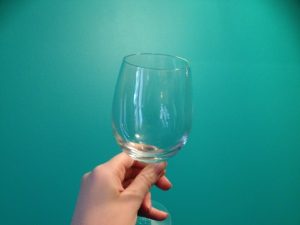
Once you take a tiny sip of the wine, when the wine coats your tongue, what flavours do you notice? Does it taste more like blackcurrants or is the flavour slightly chocolatey? Is there a hint of vanilla in the wine?
While wine appreciation can seem more like an artistic experience, there are also scientific factors at play.
In The Taste of Wine: The Art Science of Wine Appreciation, Emile Peynaud and Jacques Blouin argue that there are neurological components at work, as our taste and smell senses “need to be alerted before they function” They also say that that the tasting process “sets in motion a series of sensory stimuli, these being the sapid (pertaining to taste) and odorous (pertaining to smell) constituents of wine.”
The artistic appreciation of wines is seen at the many festivals and wine appreciation events taking place in the region. The Canberra District Harvest Festival runs April 7-8th 2017. Canberra’s Moving Feast Festival, another popular celebration of the Canberra District wine industry will run later this year.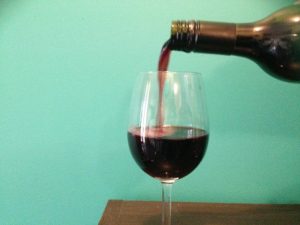
While wine-making equally holds individual artistic and scientific merits, the industry functions best by using both together. Even when tasting the wine there are more neurological factors at work then we are even consciously aware of. But wine tasting still can be likened to appreciating a piece of art work. During the process of tasting a wine, you are appreciating and evaluating the artistic decisions, through sensory perception. But considering the important roles science and art play throughout the wine making process, the industry effectively is a blend both. During the wine-making practice, art and science blend together spectacularly, creating a new form which is neither solely art nor science, much like a rosé.
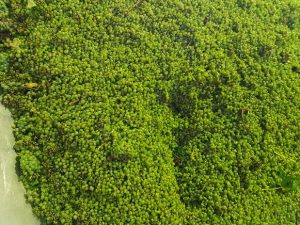
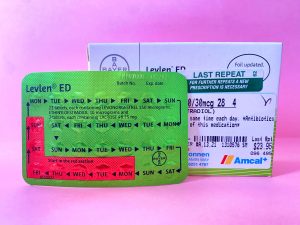

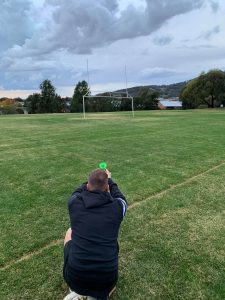

Be the first to comment!